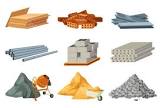Title: “Mastering Materials & Finishes: The UK’s Guide to CNC Machining Excellence”

Excerpt: Uncovering the world of CNC machining, this guide dives deep into the nuances of materials and finishes in the UK industry. Learn about the challenges, solutions, and best practices to enable precision manufacturing and robust solutions.

The world of CNC machining is as vast as it is intricate. With the ever-evolving demands of industries, it becomes imperative to understand the critical role of materials and finishes. Particularly in the UK, where precision and quality are paramount, mastering these elements can significantly enhance manufacturing outcomes.
The Challenges
One of the primary challenges in CNC machining is selecting the right material. Considering the UK’s stringent quality standards, manufacturers often grapple with striking a balance between durability, cost-effectiveness, and malleability. Aluminium, for example, is popular due to its lightweight nature and high machinability. However, it may not be suitable for applications requiring high strength and temperature resistance.
Similarly, the finish of a machined part significantly impacts both its aesthetic appeal and functional performance. A poor finish can lead to increased friction, premature wear, and even failure in critical applications. Moreover, with the UK’s focus on sustainability, manufacturers must also consider the environmental impact of their chosen finishing processes.
The Solutions
Fortunately, advances in CNC machining offer a multitude of solutions. For instance, manufacturers can now leverage CAD and CAM software to simulate the machining process, allowing them to test different materials and finishes without wasting resources.
In terms of materials, manufacturers should evaluate their choice based on the application’s requirements. For high-stress applications, materials like stainless steel or titanium may be more suitable. For high-temperature environments, Inconel and other superalloys are worth considering.
As for finishes, manufacturers have a broad spectrum to choose from. Anodizing, for instance, provides excellent corrosion resistance and comes in various colours, making it ideal for both functional and aesthetic applications. Powder coating, on the other hand, offers a robust finish and is more environmentally friendly than traditional liquid paints.
Best Practices
When it comes to best practices, communication is key. Manufacturers should maintain open lines of communication with their machining partners to ensure a clear understanding of the project requirements. This includes discussing the desired material properties, finish requirements, and any potential design considerations.
Furthermore, manufacturers should stay updated with the latest industry trends. With technological advancements such as 3D printing and AI-driven machining, the landscape of materials and finishes in CNC machining is continually evolving.
In conclusion, mastering materials and finishes in CNC machining is a complex yet rewarding endeavour. With a well-rounded understanding of the challenges, solutions, and best practices, UK manufacturers can significantly enhance their production quality and efficiency. As the world of CNC machining continues to evolve, so too should our approach towards it.
